1,4-Dihydroxynaphthalene
Synonym(s):p-Naphthohydroquinone (α);1,4-Naphthalenediol
- CAS NO.:571-60-8
- Empirical Formula: C10H8O2
- Molecular Weight: 160.17
- MDL number: MFCD00003977
- EINECS: 209-336-4
- SAFETY DATA SHEET (SDS)
- Update Date: 2024-12-18 14:08:52
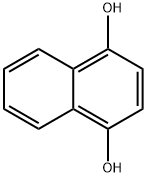
What is 1,4-Dihydroxynaphthalene?
Chemical properties
brown to greyish powder. 1,4-Naphthalenediol [571-60-8], mp 195℃, is synthesized by reduction of 1,4- naphthoquinone with sodium dithionite, or by hydrolysis of 4-amino-1-naphthol with 20 % sulfuric acid. It undergoes oxidation to give 1,4-naphthoquinone; amination to give 4-amino-1-naphthol; and methylation (MeOH – HCl) to give 4-methoxy-1-naphthol.
The Uses of 1,4-Dihydroxynaphthalene
1,4-Dihydroxynaphthalene is frequently used in organic synthesis as a reagent. In particular, it is used in the synthesis of a pH independent and cell permeant fluorescent dye, a hydroxyl regioisomeric 3'',4''-benzorhodol, which can be used as a fluorescent chemosensor and biomarker for biological applications.
Definition
ChEBI: Naphthalene-1,4-diol is a naphthalenediol and a naphthohydroquinone.
Properties of 1,4-Dihydroxynaphthalene
| Melting point: | 191-192 °C (dec.) |
| Boiling point: | 246.06°C (rough estimate) |
| Density | 1.0924 (rough estimate) |
| refractive index | 1.5178 (estimate) |
| storage temp. | Refrigerator |
| solubility | DMSO (Slightly), Methanol (Slightly) |
| form | neat |
| pka | pK1:9.37;pK2:10.93 (26°C,μ=0.65) |
| color | Grey |
| Water Solubility | slightly soluble |
| BRN | 1307689 |
| CAS DataBase Reference | 571-60-8(CAS DataBase Reference) |
| NIST Chemistry Reference | 1,4-Naphthalenediol(571-60-8) |
| EPA Substance Registry System | 1,4-Naphthalenediol (571-60-8) |
Safety information for 1,4-Dihydroxynaphthalene
| Signal word | Danger |
| Pictogram(s) |
 Corrosion Corrosives GHS05  Exclamation Mark Irritant GHS07 |
| GHS Hazard Statements |
H302:Acute toxicity,oral H315:Skin corrosion/irritation H318:Serious eye damage/eye irritation H335:Specific target organ toxicity, single exposure;Respiratory tract irritation H412:Hazardous to the aquatic environment, long-term hazard |
| Precautionary Statement Codes |
P261:Avoid breathing dust/fume/gas/mist/vapours/spray. P273:Avoid release to the environment. P280:Wear protective gloves/protective clothing/eye protection/face protection. P301+P312:IF SWALLOWED: call a POISON CENTER or doctor/physician IF you feel unwell. P302+P352:IF ON SKIN: wash with plenty of soap and water. P305+P351+P338:IF IN EYES: Rinse cautiously with water for several minutes. Remove contact lenses, if present and easy to do. Continuerinsing. |
Computed Descriptors for 1,4-Dihydroxynaphthalene
New Products
Tert-butyl bis(2-chloroethyl)carbamate (S)-3-Aminobutanenitrile hydrochloride N-Boc-D-alaninol N-BOC-D/L-ALANINOL N-octanoyl benzotriazole 4-Hydrazinobenzoic acid 3,4-Dibenzyloxybenzaldehyde Electrolytic Iron Powder 1,1’-CARBONYLDIIMIDAZOLE R-2-BENZYLOXY PROPIONIC ACID 4-HYDROXY BENZYL ALCOHOL 1,1’-CARBONYLDI (1,2-4 TRIAZOLE) S-2-CHLORO PROPIONIC ACID (2-Hydroxyphenyl)acetonitrile 4-Bromopyrazole 5-BROMO-2CYANO PYRIDINE 5,6-Dimethoxyindanone 5-broMo-2-chloro-N-cyclopentylpyriMidin-4-aMine 3-(Hydroxymethyl)benzoate N-Boc-2-chloroethylamine 1-Bromo-2-methoxy-3-nitrobenzene N-Methyl-3-cyclopenten-1-amine 2-Bromo-3-hydroxybenzaldehyde 1H-indazole-5-carboxamideRelated products of tetrahydrofuran
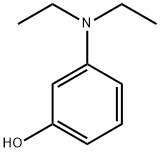
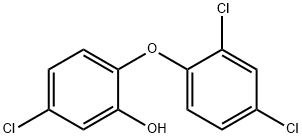

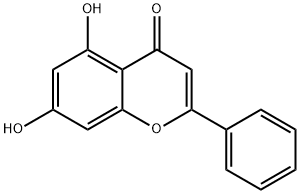
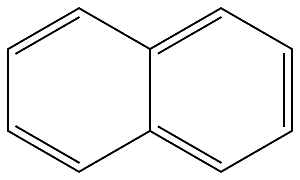
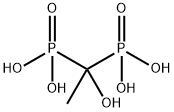


You may like
-
 1,4-Dihydroxynaphthalene CAS 571-60-8View Details
1,4-Dihydroxynaphthalene CAS 571-60-8View Details
571-60-8 -
 Naphthalene-1,4-diol 98% CAS 571-60-8View Details
Naphthalene-1,4-diol 98% CAS 571-60-8View Details
571-60-8 -
 1,4-Dihydroxynaphthalene CAS 571-60-8View Details
1,4-Dihydroxynaphthalene CAS 571-60-8View Details
571-60-8 -
 7441-43-2 98%View Details
7441-43-2 98%View Details
7441-43-2 -
 1260741-78-3 6-Bromo-3-iodo-1-methyl-1H-indazole 98%View Details
1260741-78-3 6-Bromo-3-iodo-1-methyl-1H-indazole 98%View Details
1260741-78-3 -
 4-bromo-3,5-dimethylbenzenesulfonyl chloride 1581266-79-6 98%View Details
4-bromo-3,5-dimethylbenzenesulfonyl chloride 1581266-79-6 98%View Details
1581266-79-6 -
 2490430-37-8 98%View Details
2490430-37-8 98%View Details
2490430-37-8 -
 N-(5-Amino-2-methylphenyl)acetamide 5434-30-0 98%View Details
N-(5-Amino-2-methylphenyl)acetamide 5434-30-0 98%View Details
5434-30-0